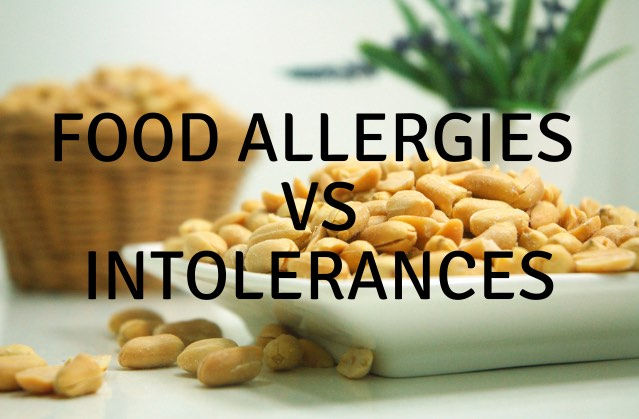The Difference Between Food Allergies and Food Intolerances
- b2fe3fab-0bc8-4be2-aae7-b3f7994b1763
- Jun 11, 2021
- 2 min read

Food allergies and food intolerances are often seen as one and the same and used interchangeably, however they can be very different. On the surface, symptoms of allergies and intolerances can feel very similar, but what sets them apart is how your body deals with them internally.
Intolerance symptoms include but are not limited to:
Gas and bloating
Stomach pains, cramping
Diarrhea
Nausea and vomiting
Headaches
Other physical reactions such as body aches, sneezing and stuffy noses
What makes a food intolerance an intolerance is how a person's digestive system reacts to certain foods and the inability to properly break down the foods causing irritability. Intolerances occur in the GI tract, most likely caused by lacking the enzymes needed to break down a food, irritable bowel syndrome, and sensitivity to food additives.
While the symptoms of food allergies can overlap and have similar symptoms, they differ in the fact it is an immune system response and can be more dangerous with symptoms including:
Itching, rashes and hives
Breathing difficulties
Drop in blood pressure
Nausea and vomiting
Anaphylaxis
Food allergies are a reaction from the immune system. When certain foods enter a person's body, the immune system will detect an allergy as a poison or toxin and try to fight it off.
Some of the most common foods that cause intolerances and allergies are:
Lactose
Gluten
Sulfites
Milk and Dairy
Eggs
Peanuts and Tree nuts
Shellfish and Fish
Soy
Wheat
Food additives
If you’ve experienced any of these symptoms after eating, it’s likely you may have an intolerance or allergy to food. If you have any symptoms that are related to an allergy, it’s best to get it officially diagnosed as it can be life-threatening. Your doctor or Allergist can administer four different types of food allergy tests - oral challenge, elimination diet, skin prick test, and blood test.
For food intolerances, there are different options available to test for intolerances through a kit at home. We tried the Food Intolerance test from Everywell and found the experience to be very easy and informative.
Outside of tests, a food elimination diet can be an option. These take much more time and discipline to stay vigilant and on top of your diet. The best way to track your diet is through a food diary. Keeping a detailed log of what you eat, knowing the ingredients and symptoms will be important to help you identify your symptoms and trace potential triggers. Once you see a trend of which foods are causing irritation and discomfort, start eliminating that food completely to see if you feel any better.
Food allergies and intolerances are often used interchangeably with sharing similar symptoms. Everyone is unique and responds to allergens and intolerances differently. Depending on the severity of your allergies, exposure, and overall health can play a role in your symptoms. There are many options to get to the root cause, proper diagnosis is usually a lifelong journey to understand what works best for you.




Comments